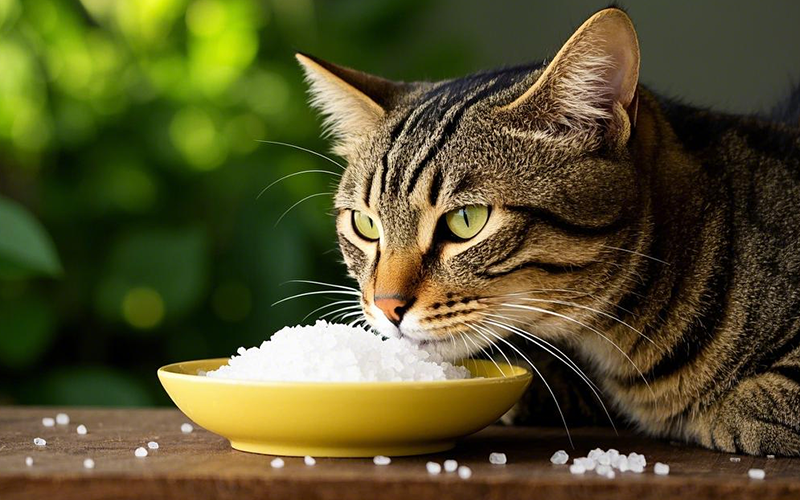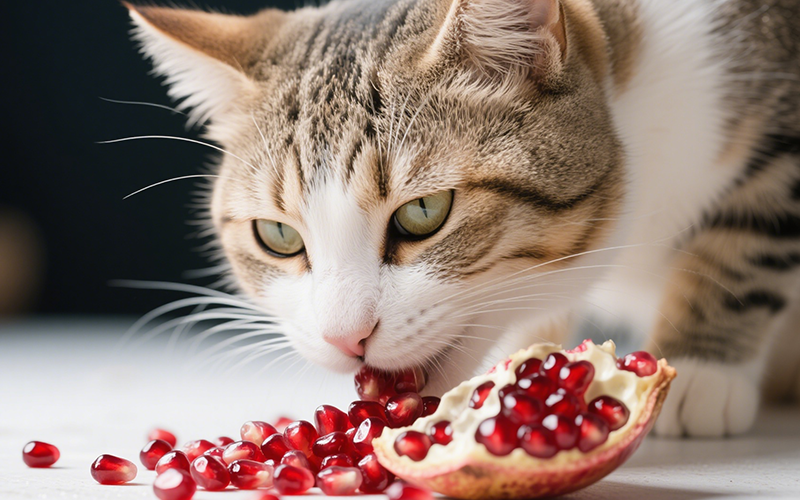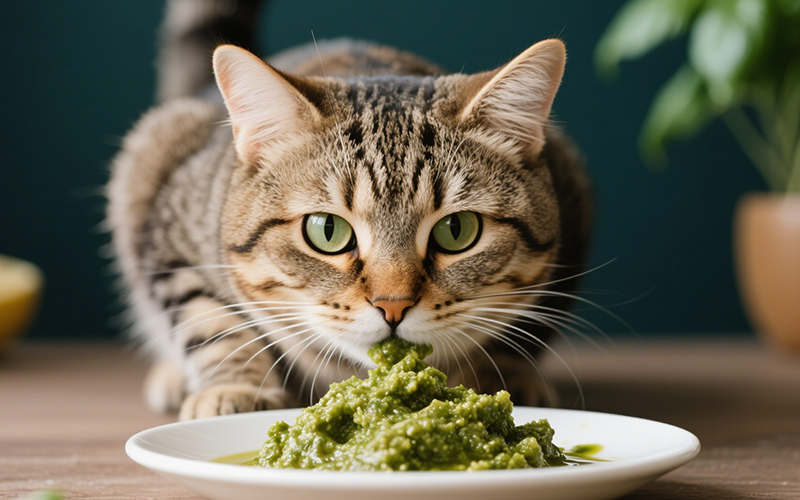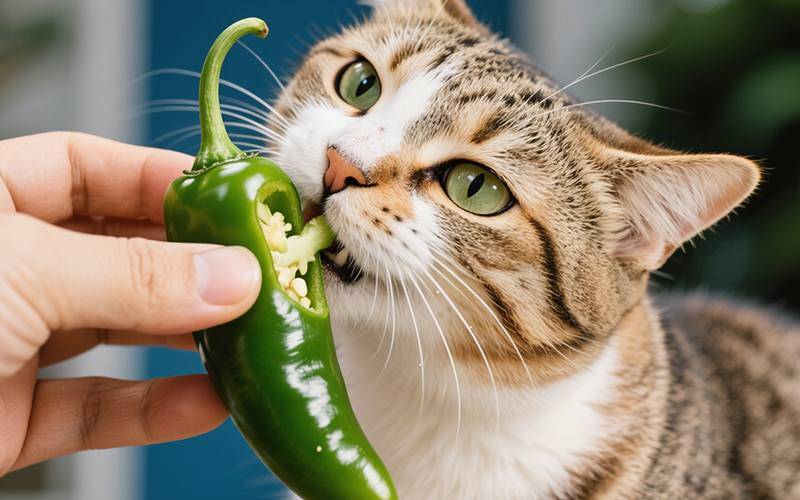Can Cats Eat Salt? Understanding the Risks and How Much is Safe
- 10 Mar 2025 11:10
Salt is a common ingredient in many human foods, but when it comes to cats, it’s important to be cautious about how much salt they consume. While cats do need sodium in their diet for proper body function, too much salt can lead to serious health problems.
In this article, we’ll explore whether cats can eat salt, the risks associated with excessive salt intake, and how to keep your cat safe from salt toxicity.

Can Cats Eat Salt? 🧂
While cats do need small amounts of sodium to maintain bodily functions such as nerve and muscle function, excessive salt is harmful to them. In the wild, cats get the nutrients they need from their prey, which contains naturally occurring sodium. However, the amount of salt in commercial pet food is carefully balanced to meet your cat’s nutritional needs, and adding extra salt from human food or seasonings can be dangerous.
The Risks of Salt for Cats ⚠️
Too much salt can lead to a condition called salt toxicity or sodium ion poisoning, which can cause a range of health problems. Here’s why you should be cautious about giving your cat salt:
1. Dehydration 💧
Excessive salt in your cat’s diet can cause dehydration. When cats consume too much salt, their body tries to get rid of the excess sodium by excreting more water through urine. This can lead to increased thirst and urination, leaving your cat feeling dehydrated. Dehydration can cause further complications like kidney issues, especially in cats with pre-existing conditions.
2. Electrolyte Imbalance ⚖️
Sodium plays a key role in maintaining the balance of electrolytes in the body, but too much can cause an imbalance. This can lead to symptoms such as lethargy, muscle weakness, and heart problems. If the sodium levels become too high, it could potentially lead to more severe complications, including seizures or organ failure.
3. Kidney Problems 🐾
Cats, particularly older cats, are more prone to kidney disease. Excessive salt can put additional strain on the kidneys, especially if your cat is already suffering from kidney issues. Over time, high sodium intake can contribute to kidney dysfunction and worsen existing conditions.
4. High Blood Pressure 💉
Just like in humans, a high-salt diet can lead to high blood pressure (hypertension) in cats. Hypertension can damage the heart, blood vessels, kidneys, and eyes over time, leading to long-term health problems.
How Much Salt is Safe for Cats? 🧂
The right amount of salt for cats is already included in their commercial pet food, so it’s unnecessary to add extra salt to their meals. The recommended daily intake of sodium for an adult cat is around 0.17 grams per 100 grams of food. However, most commercial pet foods are already formulated with the right balance of sodium, so additional salt isn’t needed.
For a healthy adult cat, the amount of sodium provided in their regular diet is sufficient. Adding salt from human food or seasoning is not recommended and can lead to health problems.
Signs of Salt Toxicity in Cats 🚨
If your cat has accidentally consumed a large amount of salt, it’s important to watch for signs of salt toxicity. Common symptoms of salt poisoning in cats include:
Excessive thirst (polydipsia)
Increased urination (polyuria)
Vomiting and diarrhea
Loss of appetite
Lethargy or weakness
Tremors or seizures
Uncoordinated movements
Swelling (edema)
Rapid heart rate
If you suspect your cat has ingested too much salt, contact your vet immediately. Salt poisoning can be serious and requires prompt treatment to prevent complications.
Foods That Contain High Levels of Salt ❗
Certain foods, especially processed or human foods, tend to be high in salt and should be avoided in your cat’s diet. Some examples of salty foods include:
Chips and pretzels
Canned soups
Cheese
Processed meats (e.g., ham, bacon, sausages)
Salted nuts
Fast food or junk food
How to Prevent Salt Poisoning in Cats 🛑
To keep your cat safe from salt toxicity, here are some helpful tips:
1. Avoid Adding Salt to Cat Food 🍽️
Don’t add table salt or seasoning to your cat’s food. The balanced formula in commercial cat food already provides the right amount of sodium your cat needs.
2. Monitor Treats and Snacks 🍪
Be cautious when giving your cat human snacks or treats. Avoid sharing foods like chips, crackers, or salted meats, as these can contain high levels of sodium. Stick to cat-specific treats that are designed with your cat’s health in mind.
3. Fresh Water 💦
Always ensure your cat has access to fresh, clean water. Proper hydration is essential to help flush excess salt out of their system. Cats are sometimes picky about their water, so try using a cat water fountain to encourage drinking.
4. Watch for Signs of Dehydration 💧
If your cat has had access to salty foods, monitor them for signs of dehydration, such as lethargy, dry gums, and excessive thirst. If you notice any of these symptoms, contact your vet right away.
5. Keep Salt Away from Cats 🧂
Be mindful of where you store salty foods, seasonings, or food that contains salt. Cats can sometimes get into places they shouldn’t, so keep these foods out of reach.
Healthier Alternatives to Salty Foods for Cats 🐱
If you’re looking for healthy treats or foods for your cat, there are many low-sodium options available:
Fresh, cooked meat (without added salt, such as chicken or turkey)
Cat treats specifically designed to be healthy and low in salt
Canned tuna in water (occasional treat, not packed in oil or brine)
Plain cooked vegetables (e.g., carrots or peas)
These alternatives provide a more nutritious option for your cat without the risks associated with excessive salt.
How PettureX Can Help With Your Cat’s Diet and Health 🐾💡
If you ever have concerns about what foods are safe for your cat, PettureX is a valuable resource. PettureX is an AI-powered pet health assistant that provides 24/7 support, offering advice on nutrition, safe foods, and general pet care. PettureX can help ensure your cat’s diet is well-balanced and meets all their health needs.
Conclusion 🎉
Can cats eat salt? While cats need sodium for proper bodily function, too much salt is dangerous and can lead to serious health problems like dehydration, kidney issues, high blood pressure, and salt toxicity. Always be cautious about feeding your cat foods that contain added salt, and stick to commercial pet food that already provides the right amount of sodium.
If your cat accidentally ingests a large amount of salt, watch for signs of salt poisoning and contact your vet immediately. By keeping an eye on your cat’s diet and offering healthy, balanced treats, you can help ensure their well-being.
For any doubts or questions about your cat’s nutrition, PettureX is available to offer expert guidance on the safest foods for your pet’s health.
Related

Pomegranate Peril: Can Cats Eat the Seeds Safely? A Vet-Reviewed Guide
- 25 Apr 2025
Prickly Problem: Can Cats Eat Pineapple Leaves Safely? A Vet-Reviewed Risk Analysis
- 25 Apr 2025
The Prickly Truth: Can Cats Eat Pine Needles Safely? A Guide for Concerned Owners
- 24 Apr 2025
Pesto & Paws: A Dangerous Mix? Can Cats Eat Pesto Safely?
- 24 Apr 2025
Persimmons and Paws: Can Cats Safely Eat This Autumn Fruit? A Vet-Reviewed Guide
- 23 Apr 2025
Nutritional Yeast for Cats: Savory Sprinkle or Health Hazard? A Vet-Reviewed Guide
- 23 Apr 2025
Marshmallows and Cats: A Puffy Problem? Why Vets Say No to This Sugary Snack
- 22 Apr 2025
Kefir for Kitties? A Veterinarian-Reviewed Guide to Safety, Benefits & Risks
- 22 Apr 2025
The Burning Question: Can Cats Eat Jalapenos? A Comprehensive Safety Guide
- 21 Apr 2025
Cool Temptation: Can Cats Eat Ice Cream Safely? The Vet-Backed Truth
- 21 Apr 2025
